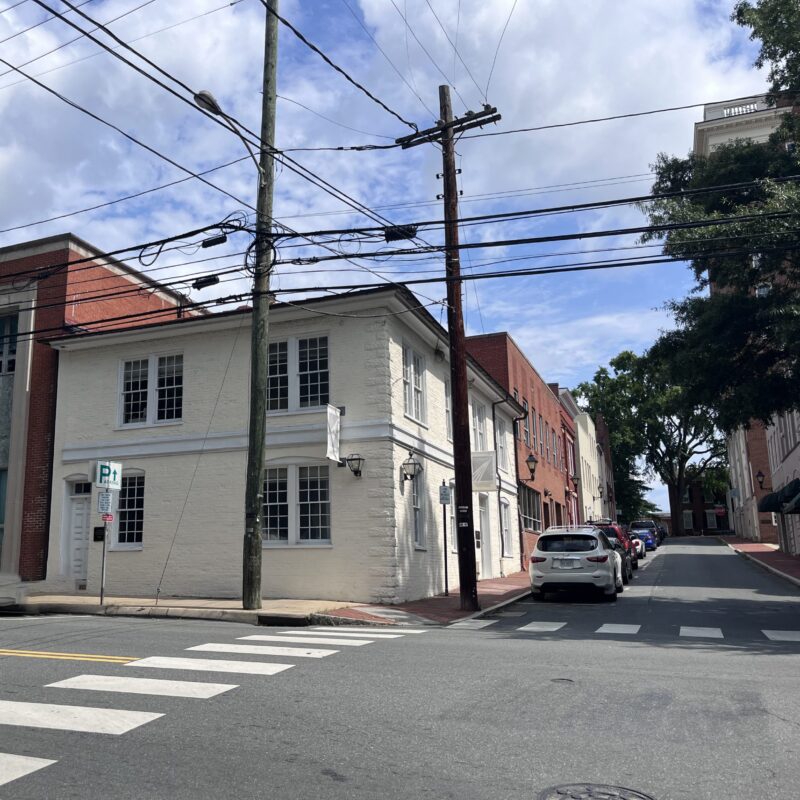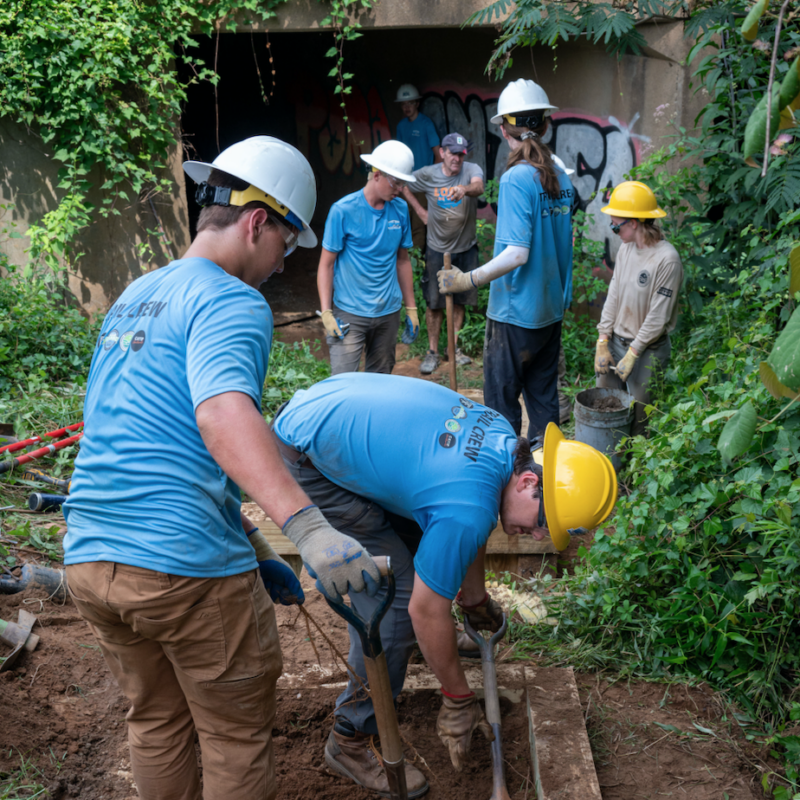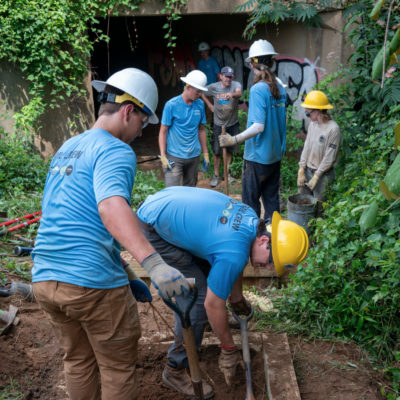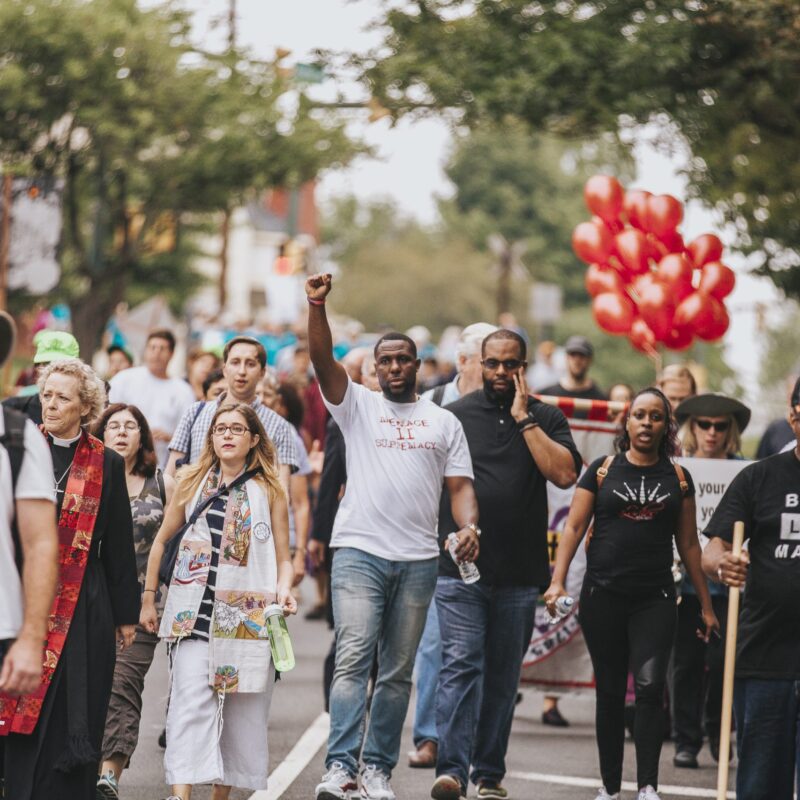| Feature articles:
Rock this town Fresh air Home style Democracy in design |
According to one local architect, the perceived tension between proponents of traditional and modern design around Charlottesville “is more in the eyes of third parties.” That’s the sentiment of Robert Nichols, a graduate of UVA’s master’s in architecture program and a founder of the firm Formwork Designs, along with his wife and partner, Cecilia Hernandez, a graduate of the University of California—Berkeley’s masters in architecture program and a frequent lecturer at UVA. Nichols does admit that there is at least some local preoccupation with copying old designs, and he says that he and Hernandez—who would call themselves “essential minimalists” if forced to pick a label—initially wondered, “Is this the right place to start a business?” But he says Formwork has been keeping plenty busy with the kind of “mid-century modern-inspired” and “site sensitive” work that Hernandez and Nichols favor since they founded the firm in 2000. And all of their work is locally derived, which is something a lot of firms can’t say around here, including Nichols’ previous employers—William McDonough, a nationally recognized leader in green building, and Bushman Dreyfus, the firm responsible for the cutting edge design of the City Center for the Contemporary Arts as well as the reverential renovation of The Paramount Theater.
 At Maya restaurant, Wolf Ackerman designed "a modest intervention into the original space—creating a tension between the new and old through juxtaposition of form." The bar and its backdrop are composed of materials that complement the brick with its clay and iron ore deposits. |
Of course, Nichols says he recognizes that it doesn’t take that many clients to keep Formwork’s small operation busy. A handful of residential clients and a few commercial gigs a year, and they are plenty occupied. (Contrast that with local firm VMDO, which designed the John Paul Jones Arena, maintains about 30 people on staff and has done work as far afield as New Jersey.) But it also doesn’t hurt Formwork’s ability to stay local and true to its modernist ideals that one of the firm’s biggest commercial clients is the local Mr. Deep Pockets himself, Coran Capshaw. The Formwork team is responsible for the designs of most of Capshaw’s hip restaurant empire, including Blue Light Grill, Ten, the remodel of Vavino into Enoteca and some modifications to both Mas and Mono Loco after Capshaw purchased those dining spots.
Not that executing their contemporary design work has been all smooth sailing. With all of the sleekly fashioned restaurants now populating the Downtown area—think Zocalo and the X Lounge, for example—it’s easy to forget that Blue Light’s exterior, with its brushed aluminum and industrial countenance, was a pretty controversial design when it was proposed to the city’s Board of Architectural Review (BAR) in 2001. Nichols and Hernandez say they had to calm quite a bit of concern over such contemporary frontage on the Mall. But Hernandez says the storefront project was “the perfect way to accomplish a modern design.” She says that’s because storefronts are examples of an architectural “type” not a style—in other words, they intentionally are facades meant to be replaced over and over again as new businesses take over and design and building protocols and materials evolve. In approving the Blue Light project, Hernandez says the BAR rightly functioned as a guardian of architectural type rather than an arbiter of style.
Who’s afraid of Fred Wolf?
A recent case where the BAR did disapprove a more cutting edge concept occurred in the case of Fred Wolf and David Ackerman’s proposed redesign of one of the entrances to First Street Christian Church. That project is in connection with a homeless day shelter that Evan Almighty director and UVA grad Tom Shadyac has been planning for the space since he bought the church in 2006. The design involved creating a slate and steel canopy above the entrance to the facility as a way to connect architecturally with the church’s existing slate roof, albeit in a way that played with the scale and functionality of that material. Wolf (who happens to be the chair of the BAR, and so he recused himself from this particular vote) suspects that a suspended slab of stone ultimately “made the BAR a little afraid.” In the end, the firm agreed to change the canopy material to something a little less threatening.
 Move over Monticello: A few local architects have new ideas on what makes a stately home. At Will Kerner’s residence in Woolen Mills, Formwork Designs’ use of poured concrete walls and a contemporary swimming pool and landscape seem just as palatial albeit with modern materials and lines. |
O.K., walking beneath a suspended slab of slate may, indeed, seem a little scary, but what does not seem at all frightening is the Wolf Ackerman firm’s overall rational approach to design, which is less about being radical and more about being efficient and appreciating the beauty of utility. Says Ackerman: “We don’t spend any conscious effort thinking about being modern. We just like to think carefully about how things get built. There’s a truthfulness in it. We like to make things that look like what they are.” And Wolf adds: What often gets lost in the mix is that traditional design was modern in its time. What makes a city interesting is how it develops over time.”
Slate slabs aside, Wolf Ackerman, like Formwork, has been able to keep plenty busy with local work that “feeds a certain agenda,” says Wolf. The two partners, both of whom have master’s degrees from UVA’s architecture school and also both did stints at Bushman Dreyfus as well as several other firms, started their own practice in 2002. According to Ackerman, it was their earliest and lowest-budget projects that really helped hone their philosophy about building things thoughtfully and efficiently.
 Formwork Designs is responsible for the sleek look of most of Coran Capshaw’s restaurant empire, including Blue Light Grill. |
“Early on, we were able to do these funky little [home] additions for clients who were willing to do something more innovative with their budgets,” says Ackerman, who adds: “It’s the process that’s important. The aesthetic reveals itself. We like to use materials that don’t need be treated again. That, in itself, is the ornament of the thing.”
And to the extent those funky little additions are attached to, say, a traditional Cape Cod or colonial, Wolf says, ”The challenge is to figure out how to be contextual with your materials or approach, but not so reverential that you’re doing a cut and paste job of the older design.”
More work to be done
All of this fresh and efficient design sounds, well, refreshing. So why don’t we see more of it around here? In the residential space, Nichols has a pretty obvious answer: “A lot of homes get built without architects.” But the reason for that may be as much about people’s perception that they lack the money for and accessibility to architects as it is about their skepticism of modern design. Unless you’re on the affluent side or a design insider, such as local photographer and Live Arts founder Will Kerner (whose Woolen Mills home Formwork designed) or Amy Gardner, a UVA architecture grad, BAR member and owner of the superbly designed shops Scarpa and Rock, Paper Scissors (whose Belmont cottage porch Wolf Ackerman refurbished), high quality contemporary design may seem out of reach.
But the situation may be changing. Nichols says that Formwork is seeking out more workforce housing projects, and Wolf and Ackerman point to the increasing popularity of design TV shows and made-for-the-masses design media, such as Dwell magazine, as evidence that design is becoming better understood and more valued by the average Joe homeowner.
 When adding on to older homes like this Cape Cod, Fred Wolf says, “The challenge is to figure out how to be contextual with your materials or approach, but not so reverential that you’re doing a cut and paste job of the older design.” |
But it’s in the public space that these firms would like to see the biggest design impact. Large projects for institutions that serve education, the arts and nonprofit endeavors are “the foam on the latte for architects,” says Ackerman. And though Wolf says that these types of clients, with their conservative institutional boards and financial bureaucracies, often stick to safe and traditional designs, he sees signs of a shift. As evidence, he points to the recent decision by the Charlottesville Boys & Girls Club to hire W.G. Clark, a UVA Architecture professor whom Wolf calls “the Godfather of modern architecture,” to design its new $7 million facility on Cherry Avenue.
That is one way to infiltrate the masses with modern design ideas: Get ‘em while their young.





